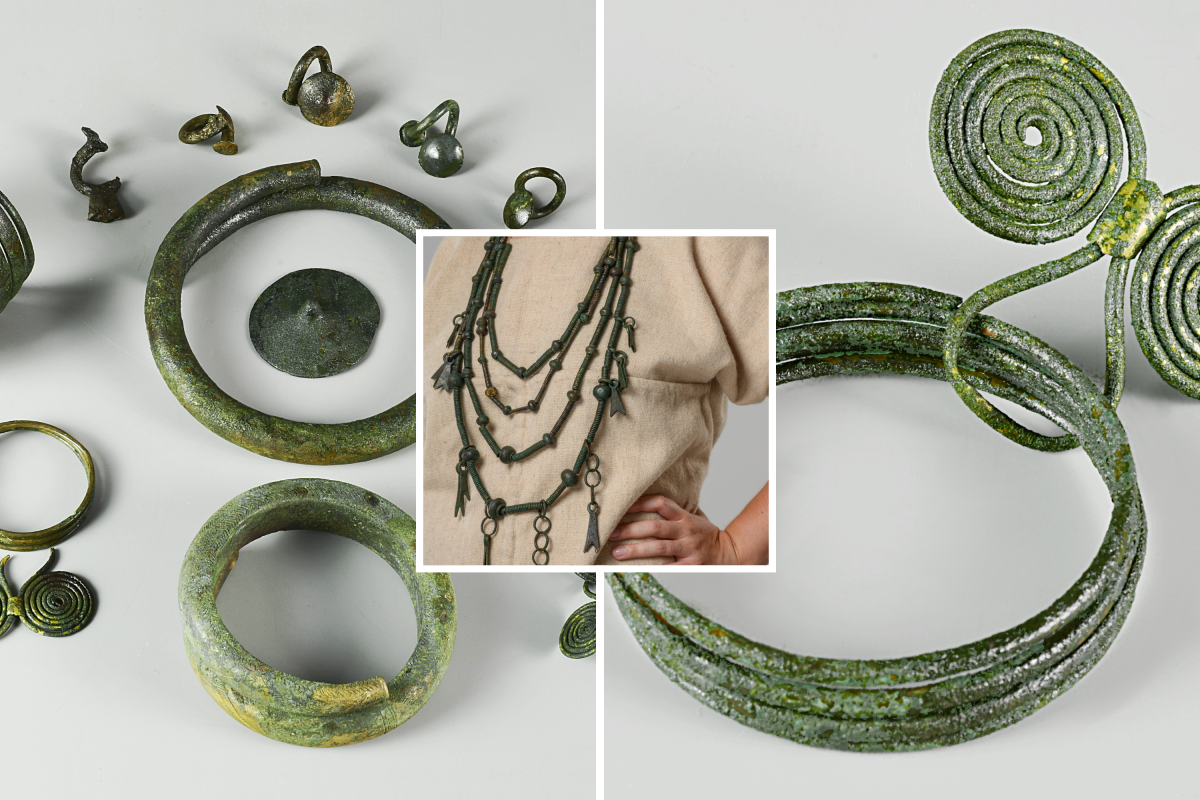An excavation of a dried-out lake has unveiled 550 bronze artifacts and skeletal remains from over 3,000 years ago, shedding light on an ancient ritual.
These artifacts, discovered in the Papowo Biskupie lake bed in Poland, provide valuable insight into rituals performed by a group of people living in the regions at the time, known as the Chelmno group. These people lived between 1200 BC to 450 BC, across the Late Bronze Age and the Early Iron Age. Findings from the excavation are published in a new Antiquity study.
The group was part of the Lusatian culture, which was widespread across what is now Poland, at the time. However unlike other Lusatians, the Chelmno group were not thought to place much ritual significance on these kinds of metal artifacts. This most recent excavation has proved this theory wrong.

The artifacts excavated alongside human remains suggests a link between burial and metal rituals, which were usually made in large bodies of water.
"Traditionally, the Chełmno group people are thought to have been largely unaffected by the social and economic developments of the Urnfield period and the subsequent Hallstatt culture," the authors wrote. "In contrast with the widespread metal-hoarding seen in more southerly Lusatian regions, metal does not appear to have featured prominently in the social and ritual activities of the Chełmno community."

Most of the artifacts uncovered appeared to be arm and neck jewelry, the study reported, as well as what could have been a woman's outfit. The remains of 33 humans appeared to have been put in the lake before the metal was, suggesting that the dead were buried here before the metal rituals were made.
So, it appears that while the Chelmno group differed in many ways from others in Lusatian culture, it seems the ritual practices and their belief system aligned later on, the study reported.
This new research has completely changed archeologists' perception of these ancient people. They have dubbed this finding "one of the most eloquent testimonies of ritual activity from the Lusatian period in Poland."
"To sum up, Papowo Biskupie opens a new window for exploring the social and ritual practices of the Lusatian era in Poland and demonstrates the potential of this place to offer a better understanding of the complex interplay between votive depositions and human sacrifice," the authors wrote.
Discoveries from the Bronze and Iron age are being found all the time. Each new finding brings archeologists closer to discovering more about the way these ancient people lived.
Do you have a tip on a science story that Newsweek should be covering? Do you have a question about the Bronze Age? Let us know via science@newsweek.com.
Uncommon Knowledge
Newsweek is committed to challenging conventional wisdom and finding connections in the search for common ground.
Newsweek is committed to challenging conventional wisdom and finding connections in the search for common ground.
About the writer
Robyn White is a Newsweek Nature Reporter based in London, UK. Her focus is reporting on wildlife, science and the ... Read more





